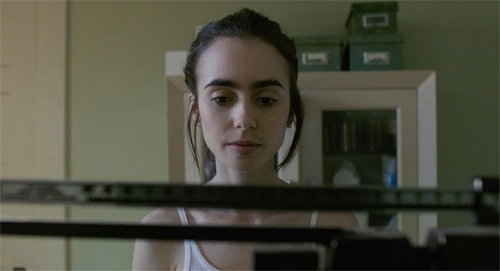Raising Awareness or Glamorizing a Dangerous Illness?
Both the writer/director of the film, Marty Noxon and its star Lilly Collins say they have struggled with anorexia themselves and made the film with care and sensitivity. Noxon said in a statement posted on Twitter:
“Having struggled with Anorexia and Bulimia well into my 20s, I know firsthand the struggle, isolation, and shame a person feels when they are in the grips of this illness. In an effort to tell this story as responsibly as we could, we spoke with other survivors and worked with Project Heal throughout the production in the hopes of being truthful in a way that wasn’t explosive. My goal with the film was not to glamorize EDs, but to serve as a conversation starter about an issue that is too often clouded by secrecy and misconceptions,” she said. “I hope that by casting a little light into the darkness of this disease we can achieve greater understanding and guide people to help if they need it.”
However, as the National Eating Disorder Association points out in their guide to Responsible Media Coverage of Eating Disorders, the complex interplay of biological, psychological, and social forces that combine to ignite the onset of an eating disorder make depicting the stories of those who struggle with these diseases especially challenging.
Many eating disorder specialists have pointed out that the ways in which the To The Bone trailer shows detailed depictions of the lead character’s eating disorder behaviors can be triggering for those who are currently struggling or have a predisposition towards an eating disorder. They fear that the film can serve as inspiration and as a feature-length “How To” video for secretly and severely restricting food intake.
There is also some concern that the film may reinforce unfortunate stereotypes about what people who struggle with anorexia look like. The story centers around a young, white woman who looks very emaciated. While there are, of course, some people effected by eating disorders who fit that description, eating disorders can and do strike people of all genders, ages, ethnicities, and body types. Many people do not look extremely thin or ill in any way, even when they are deep in the throes of the disease. Reinforcing a false assumption about what those struggling with an eating disorder look like, makes detection of the disorder in those who don’t fit “the profile” much more difficult and puts them at greater risk of permanent physical damage and even death.
Should I Watch ‘To The Bone?
Project Heal, a not-for-profit organization that raises money and awareness for eating disorder treatment and prevention, sent an email this week in which they answered some of the Frequently Asked Questions about their involvement with the film. On the question of whether the film is potentially triggering to eating disorder sufferers, co-founder Kristina Saffran said:
“Eating disorder recovery was the most challenging journey in my life, and in the early stages, I was triggered by many things—friends from treatment, diet talk amongst peers, stepping into a gym, and seeing very underweight people. I had to understand where I was in my journey and avoid those triggers. As I progressed in recovery, I was able to be around those triggers, and now, facing them solidifies how strong I am in recovery and how I never want to go back. I hope that our community can keep this perspective in mind when carefully evaluating whether to view this film.”
If you are in recovery or are struggling with an eating disorder, it’s important that you be honest with yourself about where you are in your own recovery before you decide to sit down and watch this movie. It’s perfectly natural for you to be tempted by curiosity, especially when the film seems to be offering some validation and empathy for your previous struggles. But, if you have any doubts at all, don’t take a chance on compromising your recovery.
If you are not someone who has struggled with an eating disorder, but you intend to watch the movie in the hope that it will help you get a better understanding of what it’s like to battle one of these illnesses, take what you see on the screen with a grain of salt. And balance out what you see in the movie by reading the stories of the many different types of people who have struggled with the various types of eating disorders on the Project Heal, Eating Disorder Hope, and The Meadows Ranch websites.
Ultimately, we do hope that the release of the film will lead to positive outcomes for those who struggle with eating disorders and their families by raising awareness of not only the dangers of the disease but also of the hope and healing that can be found with the right treatment program.

